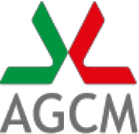LIMIT NUMBER OF OPERATORS IN THE SECTOR OF DRIVING SCHOOLS (Advisory opinion)
PRESS RELEASE
Under Section 21 of Law no. 287/90, the Italian Competition Authority submitted to the Prime Minister and the Speakers of the Senate and the Chamber of Deputies an advisory opinion to highlight the unjustified limit number of operators in the sector of driving schools.
Legislation governing driving schools is contained mainly in the new Highway Code of 1992. Driving schools' activity is to be licensed and controlled by the Provincial Administrations and comes under the technical supervision of the Motor Vehicle Administration. Section 123 of the Highway Code refers to "special provisions" issued by the Ministry of Transport to limit the number of driving schools to population, motor vehicle index and territorial extension. Such provisions, issued on May 17th, 1995, set forth that the Provincial Administrations can grant new licences if the ratio of one driving school to 15,000 residents in the municipality concerned is complied with (previously the ratio was of one driving school to 12,000 residents). New licences can be given also in the municipalities with less than 15,000 residents, but at least 8,000 people, on condition that the nearest driving school would be not less than 10 kilometers away. New licences can be granted also in the municipalities with 12,000 residents at the minimum, within the Provinces whose motor vehicle index is over 10 per cent than the national index.
About all the Italian Provinces show a ratio of driving schools to local residents which is over than those mentioned above. Even if the ministerial regulation refers to intraprovincial areas (municipal or basin area) to limit the number of new licences, data concerning Provincial averages lead to suppose that the entry of new operators into the sector is impeded almost everywhere.
Following certain complaints filed by parties who asked for licences to undertake their activity within the Provinces of Rome and Bari, the Authority requested detailed information to the competent Provincial Administrations.
With respect to the Province of Rome, where 416 driving schools are present (316 of them in Rome), the Administration has not granted any new licences, while authorized changes in licence titling. Further, driving schools seldom close down. In particular, within the Municipality of Rome, the number of driving schools appreciably exceeds the limits set forth by the law in force in about all the 21 districts which the municipal territory is divided into according to the Provincial regulation on driving schools. As such, it is impossible to start up a driving school in none of the fifteen districts constituted by the municipalities of the Province of Rome.
The same situation occurred in the Province of Bari, where the number of the existing driving schools in each municipality of the Province exceeds the limits mentioned above and, as such, new licenses cannot be granted.
According to the Authority, the application of rules limiting the number of operators authorized to undertake their activity has as its effect distortion of competition and functioning of the market, which are not justified by public economic interest. First, there are no grounds for deeming that the removal of the limit number of driving schools can bring about market conditions less favorable than the present ones to meet demand. On the contrary, on the basis of information gathered, the elimination of such limits would cause to increase the number of operators as well as to widen the range of offer, to consumers' advantage.
A proper functioning of competition in the sector of driving schools would make the carrying out of the activity effective, taking into account also pricing and service quality, whereas the limits to the number of new licences would foster the market position of existing operators and would discourage them from bettering conditions of offer. With respect to price of services supplied to consumers, limiting the number of operators within the local territories could facilitate the formation of conspiracies, which are very common in the sector concerned, as it was emerged during the inquiry conducted by the Authority in 1996.
Regulation of the driving schools market has anticompetitive effects, which violate not only the Competition Act, but also legislation governing the sector. Indeed, the provisions of the Ministerial decree are aimed at deterring entry of new operators into the market. In fact, it is clear that such a regulation would create rents to existing operators'advantage, so as to promote private interests to the detriment of consumers.
Restrictions on competition are emphasized by the Provincial regulation aimed at impeding entry for the most part. To this end, for example, regulation applied by Rome Provincial administration provides that the driving school location planning is to be updated only every ten years, on publishing census data by the National Institute of Statistics.
Taking into account the above background, the Authority expressed the hope that Section 123, subsection 3, of the new Highway Code would be amended and the limit number of driving schools would be removed.

